4-tert-Butyl-3-methoxybenzoic acid
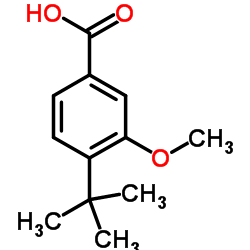
4-tert-Butyl-3-methoxybenzoic acid structure
|
Common Name | 4-tert-Butyl-3-methoxybenzoic acid | ||
|---|---|---|---|---|
| CAS Number | 79822-46-1 | Molecular Weight | 208.254 | |
| Density | 1.1±0.1 g/cm3 | Boiling Point | 334.7±35.0 °C at 760 mmHg | |
| Molecular Formula | C12H16O3 | Melting Point | 150-152ºC | |
| MSDS | Chinese USA | Flash Point | 125.2±19.4 °C | |
| Name | 4-tert-Butyl-3-methoxybenzoic acid |
|---|---|
| Synonym | More Synonyms |
| Density | 1.1±0.1 g/cm3 |
|---|---|
| Boiling Point | 334.7±35.0 °C at 760 mmHg |
| Melting Point | 150-152ºC |
| Molecular Formula | C12H16O3 |
| Molecular Weight | 208.254 |
| Flash Point | 125.2±19.4 °C |
| Exact Mass | 208.109940 |
| PSA | 46.53000 |
| LogP | 3.71 |
| Vapour Pressure | 0.0±0.8 mmHg at 25°C |
| Index of Refraction | 1.517 |
Synonym:None Known Section 2 - COMPOSITION, INFORMATION ON INGREDIENTS
Risk Phrases: None Listed. Section 3 - HAZARDS IDENTIFICATION EMERGENCY OVERVIEW
The toxicological properties of this material have not been fully investigated. Potential Health Effects Eye: May cause eye irritation. Skin: May cause skin irritation. May be harmful if absorbed through the skin. Ingestion: May cause irritation of the digestive tract. The toxicological properties of this substance have not been fully investigated. May be harmful if swallowed. Inhalation: May cause respiratory tract irritation. The toxicological properties of this substance have not been fully investigated. May be harmful if inhaled. Chronic: No information found. Section 4 - FIRST AID MEASURES Eyes: In case of contact, immediately flush eyes with plenty of water for at least 15 minutes. Get medical aid. Skin: In case of contact, flush skin with plenty of water. Remove contaminated clothing and shoes. Get medical aid if irritation develops and persists. Wash clothing before reuse. Ingestion: If swallowed, do not induce vomiting unless directed to do so by medical personnel. Never give anything by mouth to an unconscious person. Get medical aid. Inhalation: If inhaled, remove to fresh air. If not breathing, give artificial respiration. If breathing is difficult, give oxygen. Get medical aid. Notes to Physician: Treat symptomatically and supportively. Section 5 - FIRE FIGHTING MEASURES General Information: As in any fire, wear a self-contained breathing apparatus in pressure-demand, MSHA/NIOSH (approved or equivalent), and full protective gear. During a fire, irritating and highly toxic gases may be generated by thermal decomposition or combustion. Extinguishing Media: Use water spray, dry chemical, carbon dioxide, or chemical foam. Section 6 - ACCIDENTAL RELEASE MEASURES General Information: Use proper personal protective equipment as indicated in Section 8. Spills/Leaks: Clean up spills immediately, observing precautions in the Protective Equipment section. Avoid generating dusty conditions. Provide ventilation. Vacuum or sweep up material and place into a suitable, dry disposal container. Section 7 - HANDLING and STORAGE Handling: Wash thoroughly after handling. Use with adequate ventilation. Minimize dust generation and accumulation. Avoid contact with eyes, skin, and clothing. Keep container tightly closed. Avoid ingestion and inhalation. Storage: Store in a tightly closed container. Store in a cool, dry, well-ventilated area away from incompatible substances. Section 8 - EXPOSURE CONTROLS, PERSONAL PROTECTION Engineering Controls: Facilities storing or utilizing this material should be equipped with an eyewash facility and a safety shower. Use adequate ventilation to keep airborne concentrations low. Exposure Limits CAS# 79822-46-1: Personal Protective Equipment Eyes: Wear appropriate protective eyeglasses or chemical safety goggles as described by OSHA's eye and face protection regulations in 29 CFR 1910.133 or European Standard EN166. Skin: Wear appropriate protective gloves to prevent skin exposure. Clothing: Wear appropriate protective clothing to prevent skin exposure. Respirators: A respiratory protection program that meets OSHA's 29 CFR 1910.134 and ANSI Z88.2 requirements or European Standard EN 149 must be followed whenever workplace conditions warrant respirator use. Section 9 - PHYSICAL AND CHEMICAL PROPERTIES Physical State: Solid Color: white Odor: Not available. pH: Not available. Vapor Pressure: Not available. Viscosity: Not available. Boiling Point: Not available. Freezing/Melting Point: 150-152 deg C Autoignition Temperature: Not available. Flash Point: Not available. Explosion Limits, lower: Not available. Explosion Limits, upper: Not available. Decomposition Temperature: Solubility in water: Soluble. Specific Gravity/Density: Molecular Formula: C12H16O3 Molecular Weight: 208.26 Section 10 - STABILITY AND REACTIVITY Chemical Stability: Not currently available. Conditions to Avoid: Dust generation. Incompatibilities with Other Materials: Strong oxidizing agents. Hazardous Decomposition Products: Carbon monoxide, carbon dioxide. Hazardous Polymerization: Has not been reported. Section 11 - TOXICOLOGICAL INFORMATION RTECS#: CAS# 79822-46-1 unlisted. LD50/LC50: Not available. Carcinogenicity: 4-tert-Butyl-3-methoxybenzoic acid - Not listed by ACGIH, IARC, or NTP. Section 12 - ECOLOGICAL INFORMATION Section 13 - DISPOSAL CONSIDERATIONS Dispose of in a manner consistent with federal, state, and local regulations. Section 14 - TRANSPORT INFORMATION IATA Not regulated as a hazardous material. IMO Not regulated as a hazardous material. RID/ADR Not regulated as a hazardous material. Section 15 - REGULATORY INFORMATION European/International Regulations European Labeling in Accordance with EC Directives Hazard Symbols: Not available. Risk Phrases: Safety Phrases: S 24/25 Avoid contact with skin and eyes. WGK (Water Danger/Protection) CAS# 79822-46-1: No information available. Canada None of the chemicals in this product are listed on the DSL/NDSL list. CAS# 79822-46-1 is not listed on Canada's Ingredient Disclosure List. US FEDERAL TSCA CAS# 79822-46-1 is not listed on the TSCA inventory. It is for research and development use only. SECTION 16 - ADDITIONAL INFORMATION N/A |
| Hazard Codes | Xi |
|---|---|
| Risk Phrases | R36/37/38 |
| Safety Phrases | 26-36/37/39 |
| HS Code | 2918990090 |
|
~% 
4-tert-Butyl-3-... CAS#:79822-46-1 |
| Literature: Journal of Organic Chemistry, , vol. 73, # 8 p. 3094 - 3102 |
|
~% 
4-tert-Butyl-3-... CAS#:79822-46-1 |
| Literature: Zhurnal Obshchei Khimii, , vol. 16, p. 145,154 Chem.Abstr., , p. 108 |
|
~% 
4-tert-Butyl-3-... CAS#:79822-46-1 |
| Literature: Zhurnal Obshchei Khimii, , vol. 16, p. 145,154 Chem.Abstr., , p. 108 |
| Precursor 2 | |
|---|---|
| DownStream 1 | |
| HS Code | 2918990090 |
|---|---|
| Summary | 2918990090. other carboxylic acids with additional oxygen function and their anhydrides, halides, peroxides and peroxyacids; their halogenated, sulphonated, nitrated or nitrosated derivatives. VAT:17.0%. Tax rebate rate:13.0%. . MFN tariff:6.5%. General tariff:30.0% |
| 4-tert-butyl-3-methoxybenzoic acid |
| QVR CO1 DX1&1&1 |
| 3-Methoxy-4-t-Butyl-Benzoicacid |
| 3-Methoxy-4-tert-butylbenzoic acid |
| 3-Methoxy-4-(2-methyl-2-propanyl)benzoic acid |
| 4-tert-Butyl-3-methoxy-benzoesaeure |
| Benzoic acid, 4-(1,1-dimethylethyl)-3-methoxy- |
| 4-t-Butyl-3-methoxybenzoic acid |
| 3-Methoxy-4-t-butylbenzoic acid |
| MFCD06656116 |
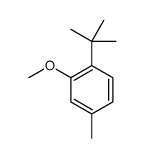
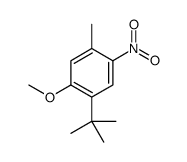
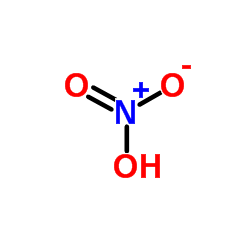
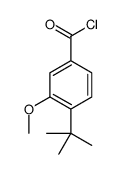 CAS#:35291-92-0
CAS#:35291-92-0
